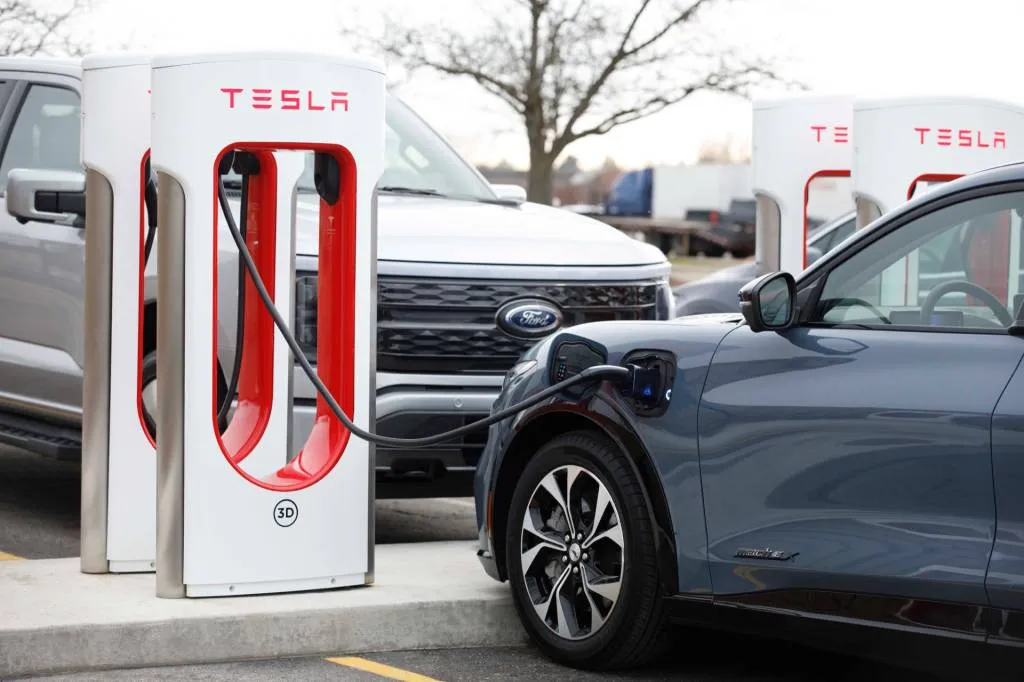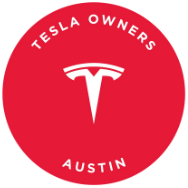- Tesla’s Supercharger network now open to non-Tesla vehicles
- Ford and Rivian among the first non-Tesla brands to utilize Superchargers
- Access requires automaker-provided adapter or Tesla’s Magic Dock
- Software updates necessary for proper interfacing with Supercharger stations
By the end of 2024, nearly every major EV brand in the U.S. had agreed to offer Tesla Supercharger access and adopt the NACS port for future EV models. However, the implementation has varied among different brands.
For most non-Tesla EV owners, an adapter is currently required to connect to Supercharger stations until new cars with NACS ports become more widespread. The formalization of NACS as a standard by the SAE in late 2023 has facilitated this transition, with the 2025 Hyundai Ioniq 5 leading the way.

Ford EVs at Tesla Supercharger
Many automakers are updating their software to enable plug-and-charge operation at Supercharger stations and integrate them into in-vehicle route planning and payment apps. With these updates, Tesla’s Magic Dock adapter at Supercharger stations may serve as a universal solution.
Ford took the lead in providing adapters for customers to fast-charge at Supercharger stations starting in February 2024, with other automakers following suit later on. Some are slated to join the initiative in the first half of 2025. Here’s the current status:
Automakers with Supercharger access:
Ford
Rivian
General Motors
Volvo
Polestar
Nissan
Automakers expected to gain Supercharger access soon according to Tesla:
BMW
Genesis
Hyundai
JLR
Kia
Lucid
Mercedes-Benz
It’s worth noting that Tesla’s V4 hardware is likely capable of accommodating 800-volt charging for faster rates, while V3 hardware (currently prevalent in North America) is limited to 400 volts. This poses a challenge for automakers with 800-volt charging capabilities, as their vehicles will charge slower at V3 Supercharger stations. The upcoming deployment of V4 Superchargers and the expansion of the Ionna fast-charging network are expected to address this issue.

